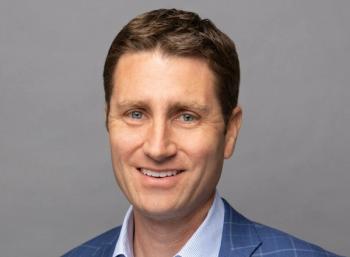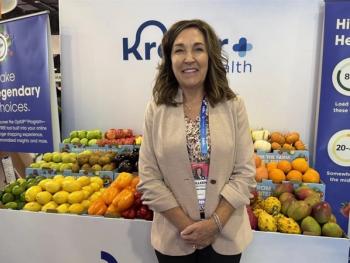
Pregnancy Wearables Hit the Market, Raising Questions
Women today have more tools than ever before to monitor their pregnancies, but data mean little without physician guidance.
How might ventures like Bloomlife change pregnancy?
Several years ago, Eric Dy, Ph.D., was a young biomedical engineer working for a company that made wearable technologies for the consumer and medical markets.
Although the industry was still new, Dy and his colleagues could sense that something was changing. They wanted to find a way to get in on the ground floor of the medical wearables revolution.
“We were kind of exploring concepts and ideas of what this new paradigm of health would look like, what would be the key steps along the way, what would change the way we think about health and delivering care that would lead to breakthroughs in medicine,” he said.
>>
While they knew the potential was high, they still needed to find their place in the market.
They landed on a tiny niche. In the coming years, however, their target is poised to become a major segment of the wearables industry.
“I was trying to have a baby. All my friends were having babies,” Dy said. “And I was like, ‘Wow, there’s a lot of unanswered questions for people at this time.’”
Seeking to provide data-driven answers to some of those questions, Dy and his colleagues launched
Dy said contraction tracking was a logical starting point from a technological and patient-demand perspective.
“It was a thing that was pregnancy-specific, and that was the lowest-hanging fruit from a technical standpoint,” he said.
While Bloomlife started with contractions, the potential for other types of pregnancy wearables is vast. And Bloomlife isn’t alone in trying to capitalize on it.
Why Pregnancy Wearables?
A handful of pregnancy wearables companies have already launched products, from monitoring devices like baby-kick trackers to ancillary products that play music or other sounds for unborn babies.
Stephen Hawkes, the founder and managing director of
“With large tech companies seeing health data as a new frontier, it’s likely we’ll see more growth in pregnancy apps as a result, as the abstract concept of data recording, analysis and outcome prediction are relatively untapped and well suited to the machine learning trend we're currently in,” he told Healthcare Analytics News™.
>>
The potential of things like machine learning can be unlocked only with the help of the kinds of data being collected by such devices.
In pregnancy, in particular, prediction could be a life-changing tool. Bloomlife’s tracker, for instance, can predict when a birth — even a premature one — is imminent. But Dy said pregnancy wearables have the potential to predict much more.
“The other end of it really is about identifying risk factors for preterm birth far in advance and then making sure that doctors are addressing those risks as effectively as possible,” he said.
Those risk factors could be things like stress sleep disorders, high blood pressure or congenital problems.
Life-Saving Tools
Preventing complications is at the heart of another new product under development: Researchers from Purdue University have developed a wearable designed to help predict preeclampsia, a complication involving high blood pressure and organ damage.
Craig J. Goergen, Ph.D., an assistant professor at Purdue University’s Weldon School of Biomedical Engineering, said a patent is currently pending for the device, and researchers are working with a number of prototypes involving a blood pressure cuff, an accelerometer and a smartphone.
The device can measure blood pressure while the patient is on her back and then on her side, assessing blood flow to the kidneys. Those data can then be sent to the patient’s physician for monitoring.
“We chose to focus on preeclampsia because while there is no comprehensive treatment for the disease, steps can be taken to increase monitoring and even mitigate the risk of progression by encouraging pregnant women to rest in the lateral recumbent position,” Goergen told Healthcare Analytics News™.
>>
Goergen said blood pressure checks in lateral recumbent and then supine positions have long helped physicians predict preeclampsia risk. The addition of the accelerometer makes it possible to precisely quantify lateral and supine positions, Goergen added.
“Since women with few/small ipsilateral renal collateral veins are more vulnerable to outflow obstruction during pregnancy, we anticipate that an [automated smartphone test] performed longitudinally will improve test sensitivity,” he said. “We also expect to optimize this low-cost diagnostic test by ensuring consistent execution, allowing for better medical surveillance and care in low-resource, remote and non-clinic-based settings.”
Goergen and colleagues already have approval from their institutional review board for two human pilot studies. They hope to begin clinical trials in the U.S. and Kenya within the next year.
One way in which a wearable from Purdue University can be used to generate data.
Downside of Data
Although the data generated by pregnancy wearables could save lives and help optimize computer models to improve health on a population level, such data will also change the experience of the individual expectant mothers and fathers who use the devices.
That’s cause for concern in some quarters, as variations in data might not be indicative of actual complications. And added anxiety or stress — even if unfounded — can have health consequences for the expectant mother and child.
That’s something Dy is aware of and sensitive to.
>>
“Companies that are working in this space — given that it’s about moms and babies — they really need to be mindful about the information it’s providing,” he said.
Dy said Bloomlife has been careful to back up its claims with rigorous data, including information on the utility and benefits of the insights it provides.
“That said, I think a lot of the hysteria,” he said. “Doctors, on one hand, say there’s not any evidence. But it’s been proven that these devices are accurate and reliable. And then they (doctors) turn around and say all these devices do is cause anxiety.”
As Dy sees it, as long as the data provided by the devices are accurate and meaningful, pregnant women should be empowered to use, rather than fear, the latest technology.
David Reuter, M.D., Ph.D., a Purdue alumnus and pediatrician at Seattle Children’s Hospital who is working on the preeclampsia monitor project, said he sees the device as a tool to give peace of mind.
“By educating an expectant mother through the use of tools capable of better predictions and potentially prevention, our hope and anticipation is that the wearable technology provides mental/intellectual comfort to reduce stress and increase the likelihood of a healthy pregnancy,” he said.
Hawkes has personal experience with a change in fetal patterns leading to anxiety: the rate of kicks from his unborn child. However, he argues, whether that data come from a wearable or a device inside a clinic, the most important component is a physician’s expertise.
“I hope we don't create new concepts such as the BMI scale, which match the trend of data the researchers saw, yet put a perfectly fit rugby player in a negative category, for example,” he said. “It all comes down to analysis, and at present, I'd trust the skills of a medical professional over the patterns and trends of data.”
The issue isn’t so much about patient access to data as it is access to an expert, who can ensure the patient will gain something from the information.
“At one level, those professionals perform a similar-shaped role as the apps. They build experience and detect when something is not right,” he said. “The difference is, they're also on hand to do further analysis and advise and deliver the actions that follow — in a way that an app can never be.”
Growing Market
In some ways, the larger questions about pregnancy monitoring and wearables won’t be answered until the sector matures. Questions surrounding which types of wearables will enter the market, the extent to which those wearables will attempt to generate meaningful medical data, the extent to which physicians will use that data and the effects on infant and maternal mortality won’t be known for years.
What’s almost certain, though, is that these questions will continue to appear as the market for pregnancy wearables, and wearable devices in general, balloons.
“I’d still say it’s in the early innings,” Dy said. “We were one of the first out of the gate. It’s been actually nice to see more companies starting to move in and starting to get more funding.”
Related

















































